No products in the cart.
Hair Care Guide
Explore the best sew in hair extensions to try in 2026
Entering the vibrant landscape of 2026 calls for an upgrade in the world of hair extensions, where trends evolve and innovations flourish. Navigating the sea of options for the best sew in hair extensions tailored to your distinct style can feel like a challenging quest.
Enter Jen Hair’s guide – an expedition into a myriad of exquisite options designed to captivate all tastes, hair types, and budgets. From sleek to voluminous, textured to seamless, our exploration embraces diversity. Unveiling the secrets behind quality, installation methods, and upkeep, we cater to both newcomers and connoisseurs of hair extensions. Our mission? To equip you with the knowledge and choices to craft the hair of your dreams and allure the gaze of the trendsetters.
Related posts:
What is a sew in?
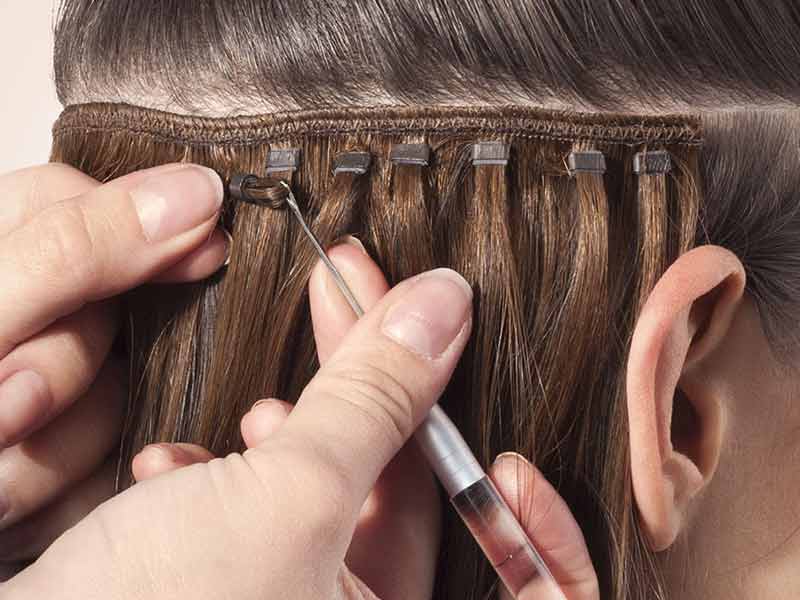
A sew in, also known as a weave, is a method of hair extension where wefts of hair are sewn onto braided natural hair using a needle and thread. It allows you to add length, volume, and different styles to their hair without chemically altering their natural hair. Sew-ins can be done using either human hair or synthetic hair, depending on personal preference and budget.
How long does a sew in last?

The duration of a sew-in hair extension installation can vary depending on several factors, including the type of hair used, the quality of the installation, and how well the extensions are maintained. On average, a sew in can last anywhere from 6 to 8 weeks. However, some sew-ins can stay intact for up to 12 weeks with proper care.
After the initial 6 to 8 weeks, the sew-in will start to loosen as the natural hair grows, and the tension on the braids may become uncomfortable. At this point, it is advisable to have the sew-in professionally removed or adjusted. It is not recommended to leave the sew-in in for an extended period, as it can lead to damage or breakage of the natural hair.
How to make sew in last longer?
From the above section, we have answered the burning question “How long does a sew in last?”. However, have you ever known that you can extend the lifespan of your sew-in and keep it looking fresh with just some tips? Continue reading!
1. Choose high-quality hair extensions
Investing in high-quality hair extensions is crucial for a longer-lasting sew-in. You should opt for human hair extensions, preferably virgin hair, as they tend to have better longevity and a more natural appearance.
Moreover, we recommend searching for the best sew in hair extensions on the market. These products are crafted with 100% human hair, which are less prone to tangling and shedding.
2. Seek professional installation

While it may be tempting to attempt a DIY sew-in, professional installation is highly recommended. An experienced stylist will ensure that the extensions are applied correctly, preventing damage to your natural hair and maximizing their longevity. A professional installation also guarantees a natural-looking result and reduces the risk of discomfort or tightness.
3. Practice proper washing techniques
You should wash your extensions in every 7 to q0 days. When washing your hair, use a gentle, sulfate-free shampoo and conditioner specifically designed for hair extensions. Don’t forget to avoid applying excessive force or rubbing the extensions vigorously. Instead, you should gently massage the products into your scalp and rinse thoroughly.
4. Follow a regular maintenance routine
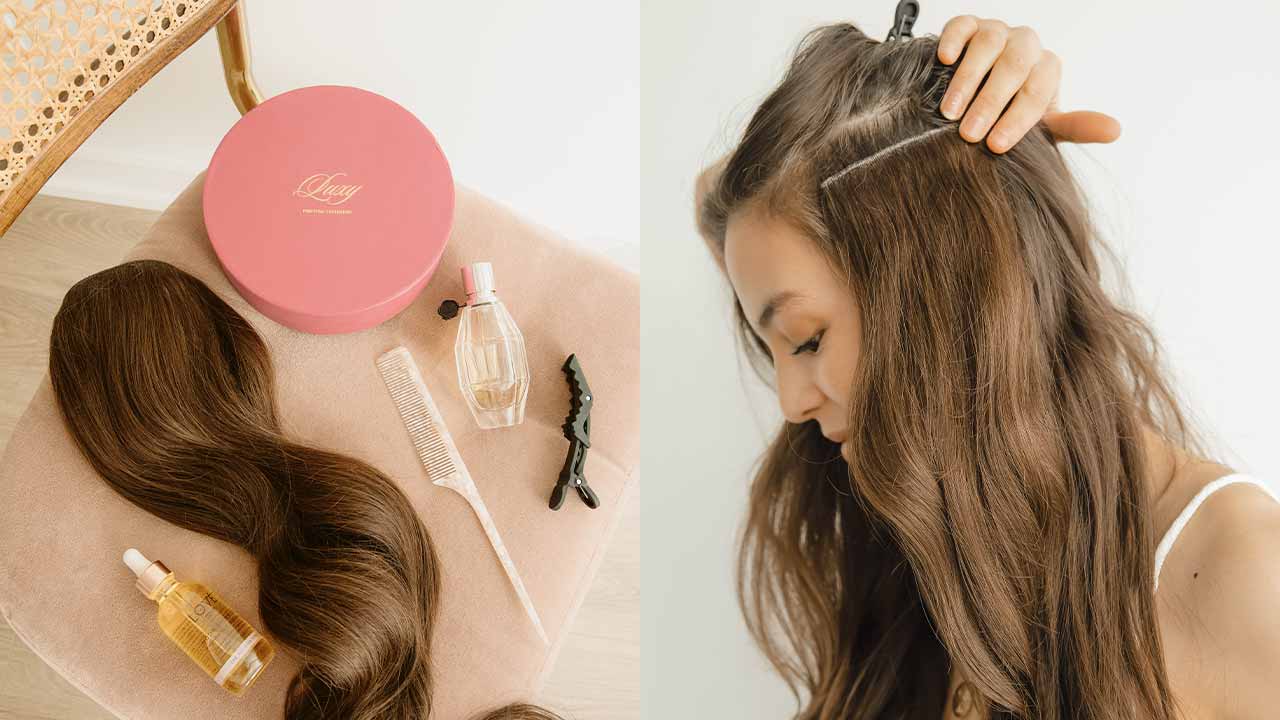
Establishing a regular maintenance routine is key to extending the life of your sew in. First, you need to develop a nightly routine that involves wrapping your hair in a silk or satin scarf or using a silk pillowcase to prevent friction and minimize tangles. Additionally, avoid excessive heat styling, as it can damage the hair extensions. What’s more? Remember to opt for heat-free styles or use a heat protectant spray if styling with hot tools is necessary.
5. Protect your hair during physical activities
To avoid damage and breakage, tie your hair in a low ponytail or braid before exercising to minimize movement and friction. Tight hair accessories should be avoided as they can cause tension and breakage to your natural hair.
When planning to swim, it is important to be extra cautious and protect your sew in from the damaging effects of chlorine and saltwater. Wearing a swim cap or applying a leave-in conditioner can create a protective barrier between your hair and the water. After swimming, rinse your hair with clean water and apply a moisturizing conditioner to restore hydration and prevent tangling.
Sleeping on a cotton pillowcase can cause friction and tangles, leading to damage and a shorter lifespan for your sew in. To prevent this, our hair experts suggest using a silk or satin pillowcase, or wrapping your hair in a silk or satin scarf to reduce friction and prevent tangling.
The 7 best sew in hair extensions
1. YoungSee Blonde Sew in Hair Extensions
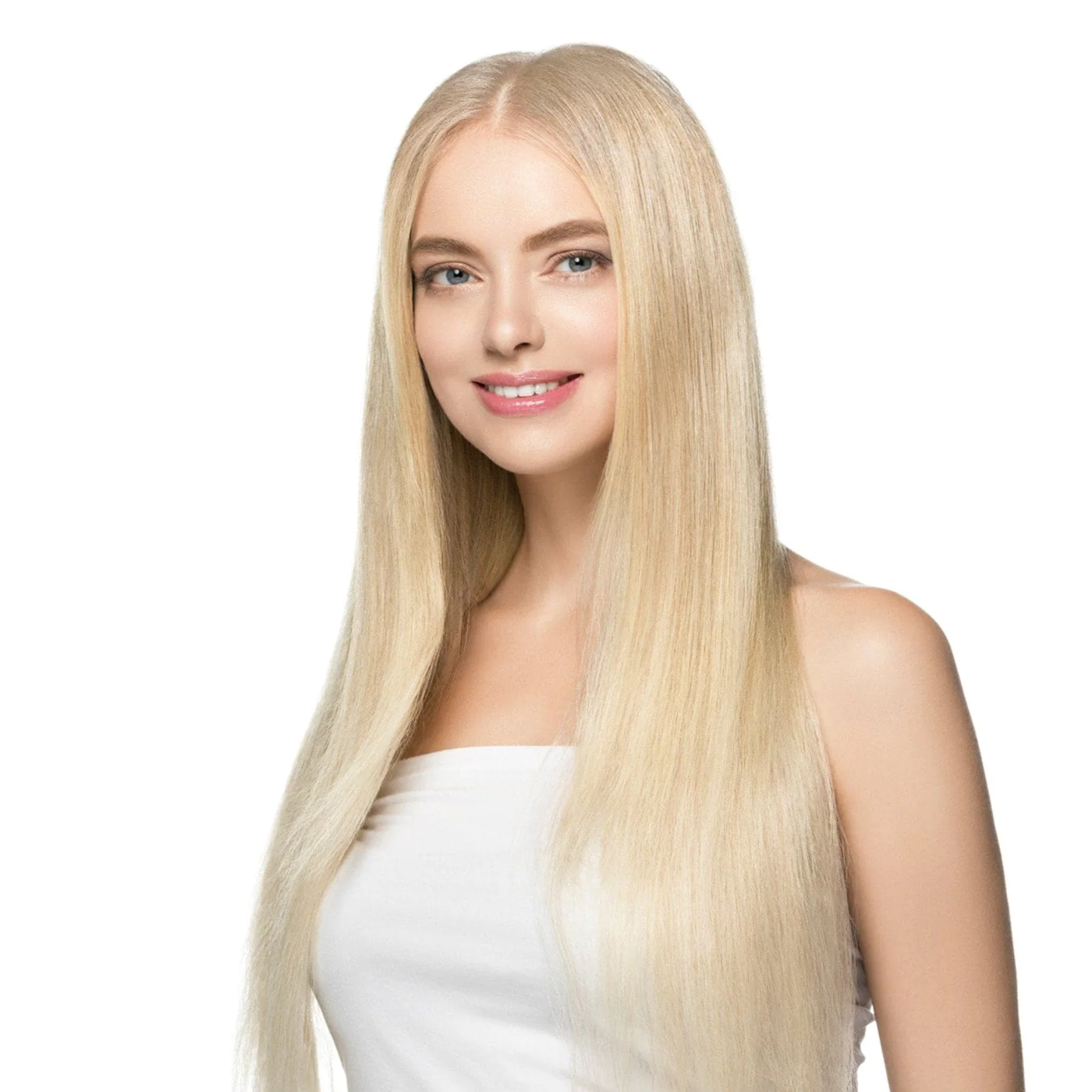
The YoungSee Blonde Sew in Hair Extensions is the best sew in hair extensions for Caucasian women. These highlight extensions weigh 100g per bundle. For those with thick hair, one pack is sufficient, while thin hair requires 2-3 packs. The product is also made from premium Brazilian real human hair, guaranteeing a thick and soft texture. While the ends of the weft extensions may be slightly thinner than the top, they seamlessly merge with your own hair, creating a natural and flawless blend.
Pros:
- Made of high-quality Brazilian real human hair
- Thick and soft texture that blends well with natural hair
- No tangles or split ends
- Durable double weft construction
- Easy to install
Cons:
- The presence of short hairs at the root of the weft due to the double weft process (although it is normal and not a significant issue)
2. LaaVoo Sew in Hair Extensions

When it comes to the best sew in hair extensions for black hair, the LaaVoo Sew in Hair Extensions Are an absolute game-changer! The strands are soft, lustrous, and blend seamlessly with the natural hair texture. The product gives customers the confidence to rock any hairstyle they desire, from voluminous curls to sleek updos.
The installation process was a breeze, thanks to the durable wefts and secure stitching. Unlike other extensions, these stay in place even during intense activities, making them perfect for an active lifestyle.
Pros:
- Excellent quality hair that is soft and lustrous
- Durable wefts and secure stitching ensure the extensions stay in place, even during active lifestyles
- Easy installation process for a hassle-free experience
- Long-lasting and retains its quality over time
Cons:
- May require regular maintenance and care to ensure longevity and prevent tangling or shedding
3. WENNALIFE Sew in Hair Extensions
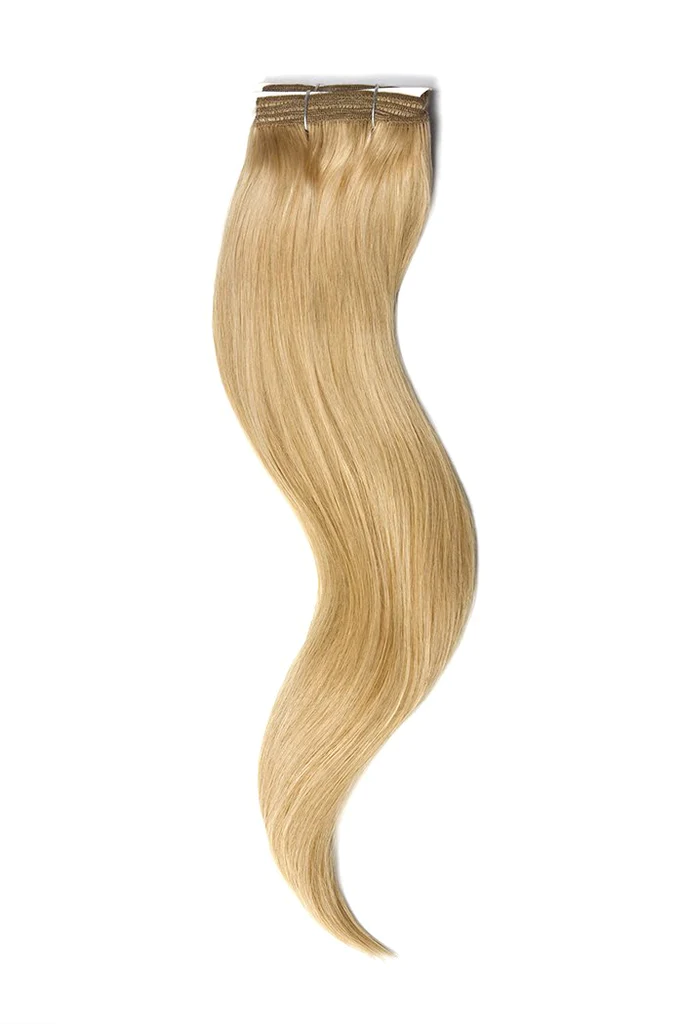
The WENNALIFE Sew in Hair Extensions is the perfect choice when it comes to the best sew in hair extensions. Made from 100% real human hair, these weft hair extensions are designed to provide exceptional quality and durability. With a length of 16 inches and a weight of 80g, they offer the ideal balance between volume and manageability.
Moreover, its stunning light blonde highlighted golden blonde shade, which adds a touch of radiance and elegance to any hairstyle. The hand-tied weft construction also ensures a seamless and discreet blend with your natural hair, making them virtually undetectable.
Pros:
- Made from 100% real human hair, ensuring a natural and authentic look.
- The light blonde highlighted golden blonde shade adds a beautiful touch of radiance.
- Hand-tied weft construction provides a seamless and discreet blend with natural hair.
- Length of 16 inches and weight of 80g offers a balanced combination of volume and manageability.
Cons:
- None
4. Sunny Sew in Hair Extensions
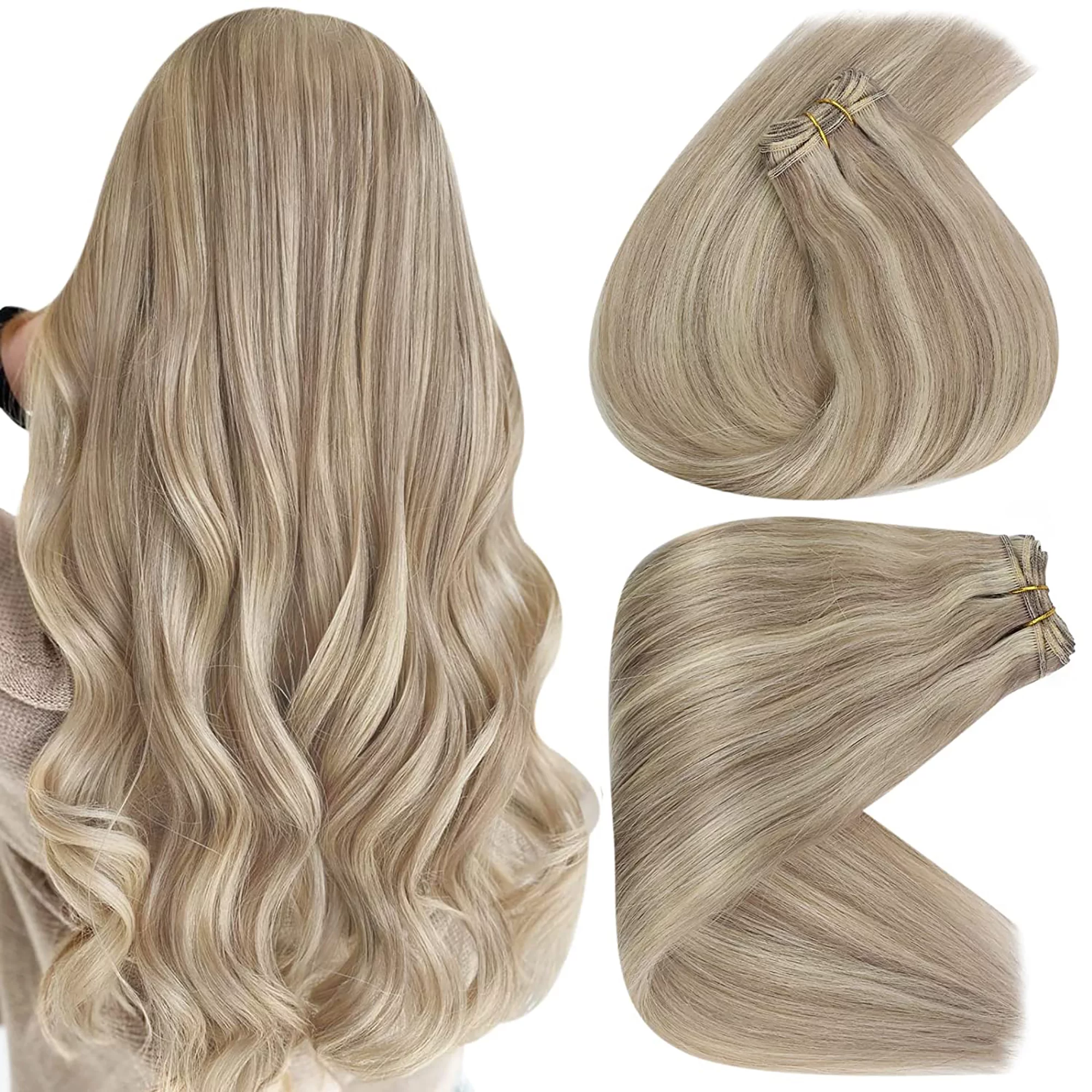
Several buyers that tried the Sunny Sew in Hair Extensions all approved it is the ultimate choice for having gorgeous hair. First off, the quality is unbeatable. Real human hair feels so soft and luxurious.The blonde highlights are perfectly blended, giving my hair a natural sun-kissed look.
The ash blonde mix with platinum blonde creates a stunning colour that matches seamlessly with my hair. The weft extensions are easy to sew in and stay securely in place. Plus, the length of 24 inches adds that extra wow factor. With 100g of hair, you have more than enough for a full and voluminous look.
Pros:
- High-quality real human hair that feels soft and luxurious.
- Perfectly blended blonde highlights for a natural sun-kissed look.
- Beautiful ash blonde mix with platinum blonde for a stunning color.
- Easy to sew in and stays securely in place.
- Long length of 24 inches adds an extra wow factor.
- Comes with 100g of hair, providing a full and voluminous look.
Cons:
- None
5. Full Shine Sew in Hair Extensions

If you are in search of the top sew in hair extensions, look no further than the Full Shine Sew in Hair Extensions. These extensions are incredibly soft, silky, and undeniably luxurious. The double-weft construction ensures durability and prevents shedding, allowing for long-lasting wear.
The bayalage black with bleach blonde color combination adds a touch of sophistication and dimension to any hairstyle. Furthermore, the 22-inch length provides ample versatility for styling, and the 120g weight feels lightweight and comfortable.
Pros:
- High-quality Brazilian virgin remy hair that is soft, silky, and luxurious.
- Double weft construction for durability and minimal shedding.
- Lightweight 120g provides comfort during wear.
- Suitable for achieving sleek, straight styles as well as voluminous curls.
- Long-lasting wear for extended enjoyment.
Cons:
- The 120g weight may not provide enough volume for those desiring a fuller look.
6. Munx Sew in Hair Extensions

The Munx Sew in Hair Extensions are undoubtedly the best sew in hair extensions available on the market. With their exceptional quality and flawless craftsmanship, they offer an unparalleled hair transformation experience. The extensions are made from 100% human hair, providing a natural and seamless blend with your own hair.
Moreover, the product is expertly designed to withstand everyday wear and tear, ensuring long-lasting beauty. The extensions also boast a wide range of colors and lengths, allowing for endless styling possibilities. The best part? They also offer maximum comfort and a secure fit, giving you confidence in every step.
Pros:
- Made from 100% human hair for a natural blend
- High quality and flawless craftsmanship
- Durable and long-lasting
- Maximum comfort and secure fit
Cons:
- Require regular maintenance
7. ABH AMAZINGBEAUTY HAIR Sew in Hair Extensions
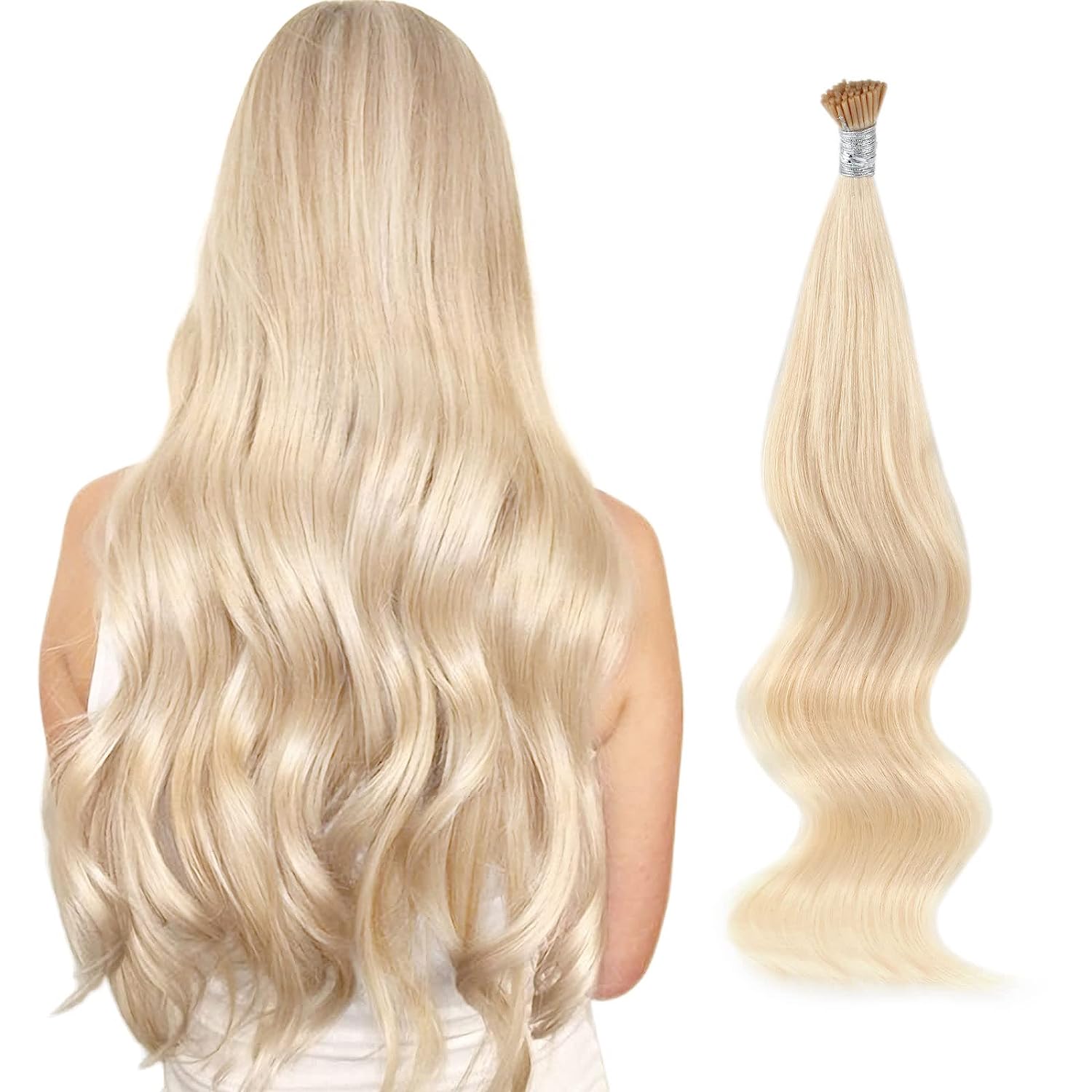
The ABH AMAZINGBEAUTY HAIR Sew in Hair Extensions has emerged as the most sought-after sew-in hair extensions in the market. Made from 100% remy human hair, these extensions boast a soft texture and remarkable durability, allowing for effortless styling and long-lasting wear. You will adore its versatility, which can be seamlessly integrated into various hairstyles, including updos, ponytails, and braids. The extensions are available in a wide range of lengths, colors, and textures, making it easier for individuals to achieve their desired look.
Pros:
- Hand-tied weft construction for seamless blend
- Made from 100% Remy human hair for soft texture and durability
- Available in a wide range of lengths, colors, and textures
- Provides voluminous and undetectable look
- Long-lasting wear
Cons:
- It may cause discomfort or tension if not installed or adjusted properly
How to choose the best sew-in hair extensions?
Finding the best sew in hair extensions is not as hard as you might think. There are a few key factors to consider to ensure you choose the best option for your hair type and desired style. Here are some important factors to keep in mind:
- Hair quality: Opt for high-quality extensions made from 100% human hair. Remy hair is collected and aligned in the same direction, ensuring a natural look and minimizing tangling or shedding.
- Length and thickness: Determine the length and thickness you want to add to your hair. Sew-in extensions come in different lengths and thicknesses, allowing you to customize your desired look.
- Attachment method: There are various techniques available, such as beaded weft, braided sew-in, or micro-link extensions. Choose the method that suits your hair type and comfort level.
- Maintenance and longevity: Take into account the maintenance requirements and expected longevity of the extensions. Some types of sew-in extensions may require more care and maintenance than others.
How to care for sewn in hair extensions
Proper care and maintenance are crucial to ensure the longevity and appearance of your sewn-in hair extensions. Here are our guidelines on how to care for sewn-in hair extensions that you should follow:
1. Wash your extensions regularly
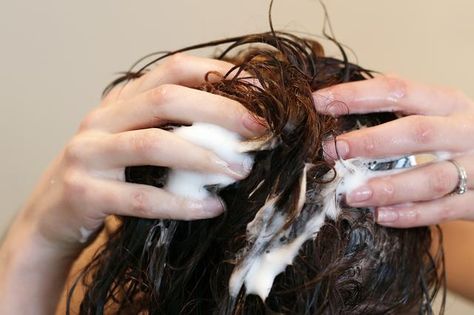
Regular washing is a vital part of maintaining clean and healthy hair extensions. We recommend using sulfate-free and extension-friendly shampoos that are gentle on your scalp and hair.
When washing, gently massage the shampoo into your scalp, avoiding excessive scrubbing that can cause tangling and matting. After that, you rinse it thoroughly with lukewarm water, ensuring no residue is left behind.
2. Condition the extensions
Like other extensions, conditioning is always a practical tip on how to care for sewn-in hair extensions. After washing, you can condition your sewn-in hair extensions to keep them soft, shiny, and manageable.
First, you need to choose high-quality conditioners that are specifically formulated for sewn-in hair extensions. To use it, you can begin by applying a generous amount of conditioner, focusing on the mid-lengths and ends of the hair. Then, leave the conditioner on for a few minutes to allow it to penetrate the hair shafts. The final step is to rinse thoroughly with lukewarm water to ensure no product residue remains.
3. Avoid overwashing
While regular washing is important, overwashing can lead to dryness and premature wear of your extensions. This is one of the most important tips on how to care for sew-in hair extensions from our experts.
In general, you should only wash your extensions every 7-10 days, or as advised by your stylist. You can also adjust the frequency based on your hair type and lifestyle. Moreover, if you feel the need to refresh your extensions between washes, consider using a dry shampoo designed for extensions.
4. Use a wide-toothed comb
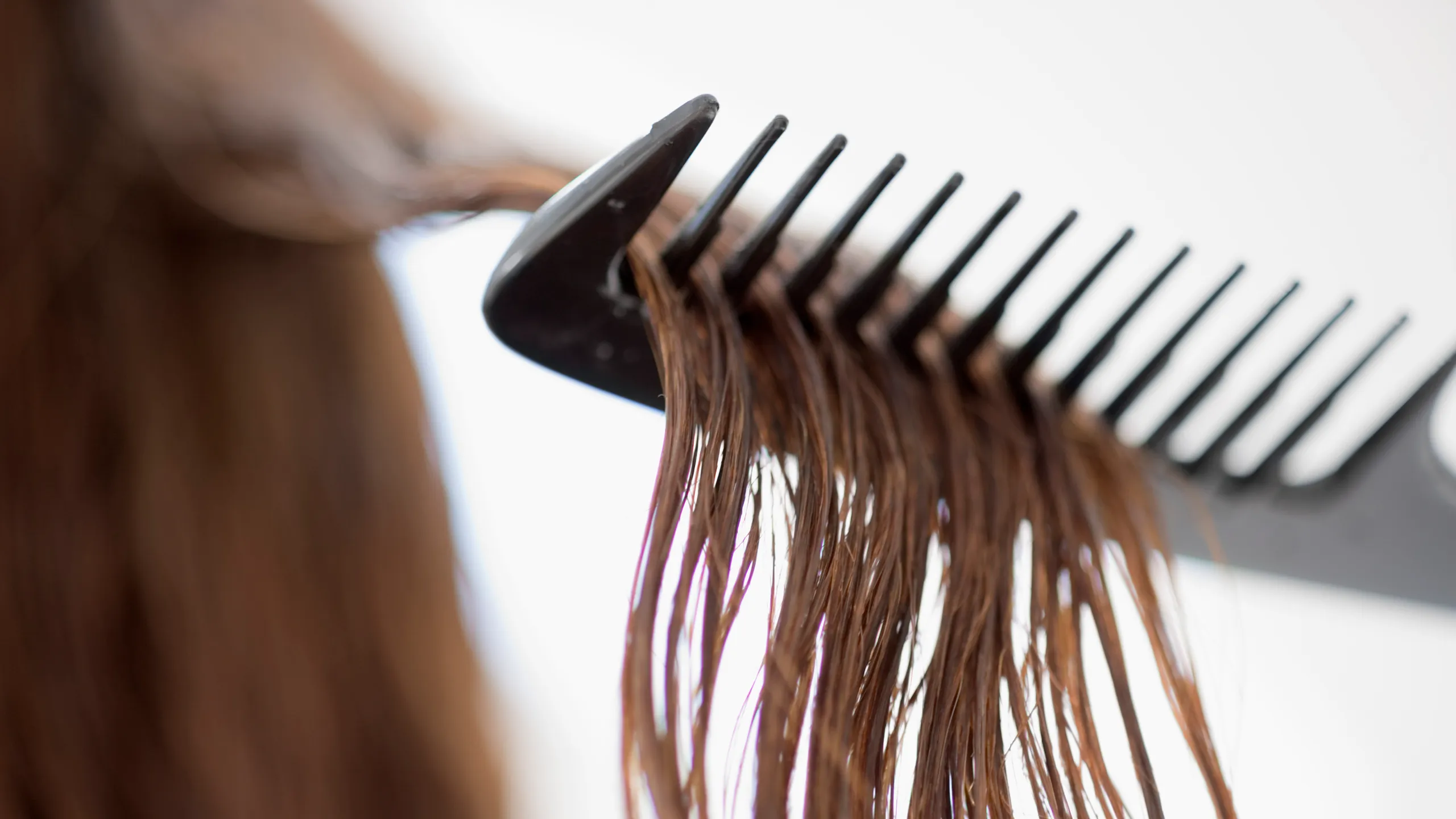
To prevent unnecessary tugging and pulling, we recommend using a wide-toothed comb when detangling your hair extensions. You can start from the ends and gradually work your way up to the roots, gently removing any knots or tangles.
Don’t forget to avoid using a brush or comb with fine teeth, as it may cause breakage or damage to the extensions. Furthermore, the most important thing is to be patient and gentle during the detangling process to maintain the integrity of your extensions.
5. Minimize heat styling
Excessive heat can damage both your natural hair and the extensions. Since then, other than cleaning and conditioning it, minimizing heat styling is also a crucial part of how to care for sewn-in hair extensions.
You should avoid heat-styling tools, such as flat irons, curling irons, and blow dryers. When heat styling is necessary, always apply a heat protectant spray or serum to shield your hair from high temperatures. Opt for heat-free styling alternatives whenever possible to minimize damage and maintain the longevity of your extensions.
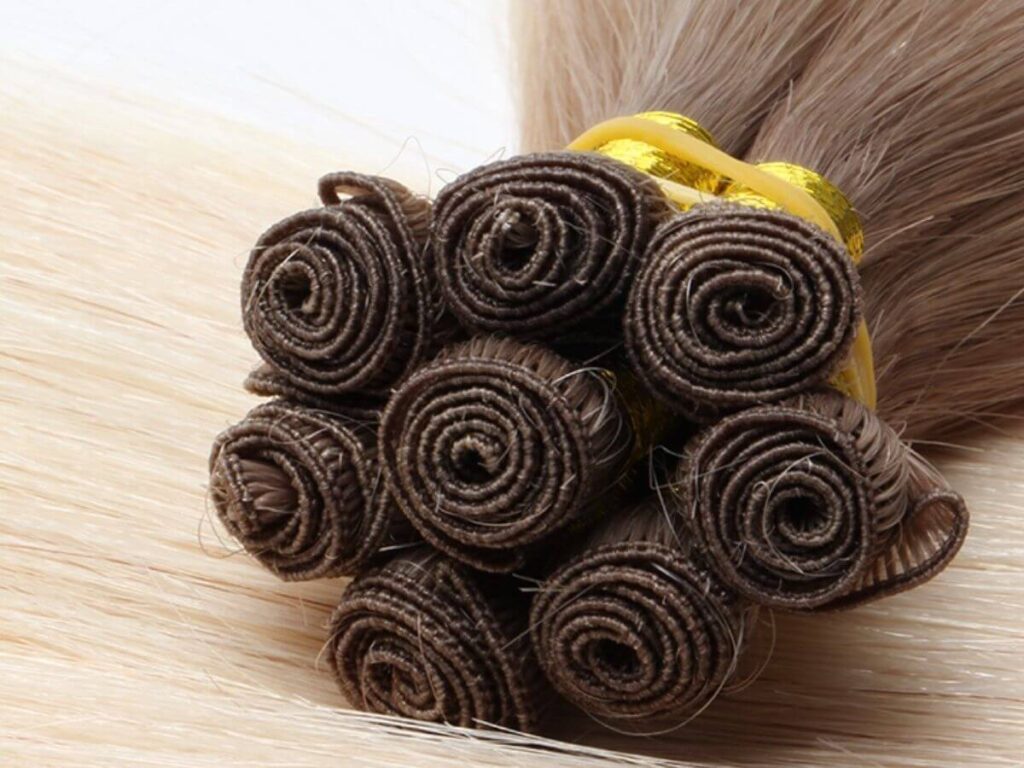
6. Sleep with care
How to care for sewn-in hair extensions even when you are sleeping? We help a few simple habits here! Before bed, you should tie your hair in a loose braid or bun to prevent tangling and reduce friction between the extensions and the pillowcase.
More than that, consider using a silk or satin pillowcase, as it creates less friction and helps maintain the smoothness of your extensions. By taking these precautions, you can wake up with tangle-free and beautiful hair extensions. Further reading: How to sleep with hair extensions the right way?
7. Avoid chemical treatments

Chemical treatments such as perms, relaxers, and color treatments can weaken the bonds of your sewn-in hair extensions. It’s best to avoid these treatments or consult with a professional stylist experienced in working with extensions. If you desire a new look or color, consider temporary alternatives like clip-in extensions that allow you to experiment without compromising the integrity of your sewn-in extensions.
8. Protect your extensions in chlorinated or saltwater
With summer approaching, you may find yourself swimming more frequently. If you have sewn-in hair extensions, please take measures to protect them when swimming in chlorinated or saltwater. Prior to entering the pool or ocean, wet your hair with clean water to reduce the amount of chlorine or saltwater absorption.
Once you have finished swimming, make sure to rinse your hair thoroughly with clean water and apply a leave-in conditioner to replenish moisture and minimize any potential damage. By following these simple steps, you can enjoy your time in the water without compromising the integrity of your extensions.

9. Maintain regular extension checks
Other than several steps on how to care for sewn-in hair extensions above, another crucial step is to schedule regular maintenance appointments with your stylist. During these appointments, your stylist will assess the condition of your extensions, reposition any loose or damaged wefts, and recommend any necessary adjustments. Following their advice and scheduling regular checks will help you maintain the health and longevity of your sewn-in hair extensions.
10. Stay hydrated and eat a balanced diet
Healthy hair starts from within. This tip seems to be simple as it sounds, however, it is one of the most difficult things to do on how to care for sewn-in hair extensions.

To promote the growth and strength of your natural hair and extensions, remember to stay hydrated by drinking an adequate amount of water daily. Additionally, you should incorporate a balanced diet rich in vitamins, minerals, and protein. Nutrients such as biotin, vitamin E, and omega-3 fatty acids contribute to healthy hair. By nourishing your body from the inside out, you support the overall health and vitality of your sewn-in hair extensions.
FAQs
1. Are sewn-in extensions the best?
Sewn-in extensions are considered one of the best options for achieving a natural and long-lasting hair transformation. Since they are securely sewn into your natural hair, they offer a seamless blend and allow for versatile styling options. Sewn-in extensions can last for several months with proper care and maintenance.
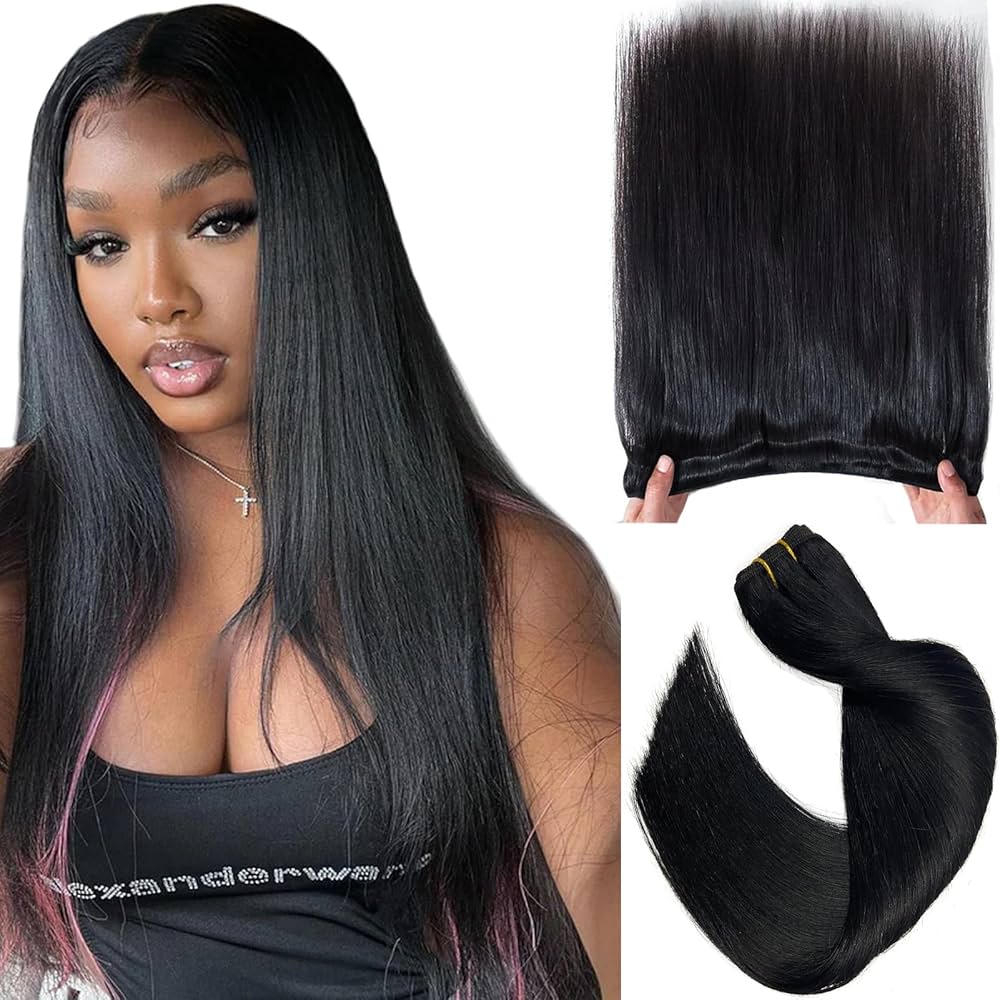
2. What is the best hair for sew-in extensions?
The best sew in hair extensions is often made from 100% human hair. This is sourced from a single donor and has its cuticles intact, providing a natural look and feel. This high-quality hair ensures minimal tangling, shedding, and a seamless blend with your natural hair.
3. Can you keep a sew-in for 4 months?
While sew-in extensions can last for several months, it is generally recommended to remove them and reapply them after 6 to 8 weeks. Leaving sew in extensions for more than four months can lead to matting, tangling, and potential damage to your natural hair.
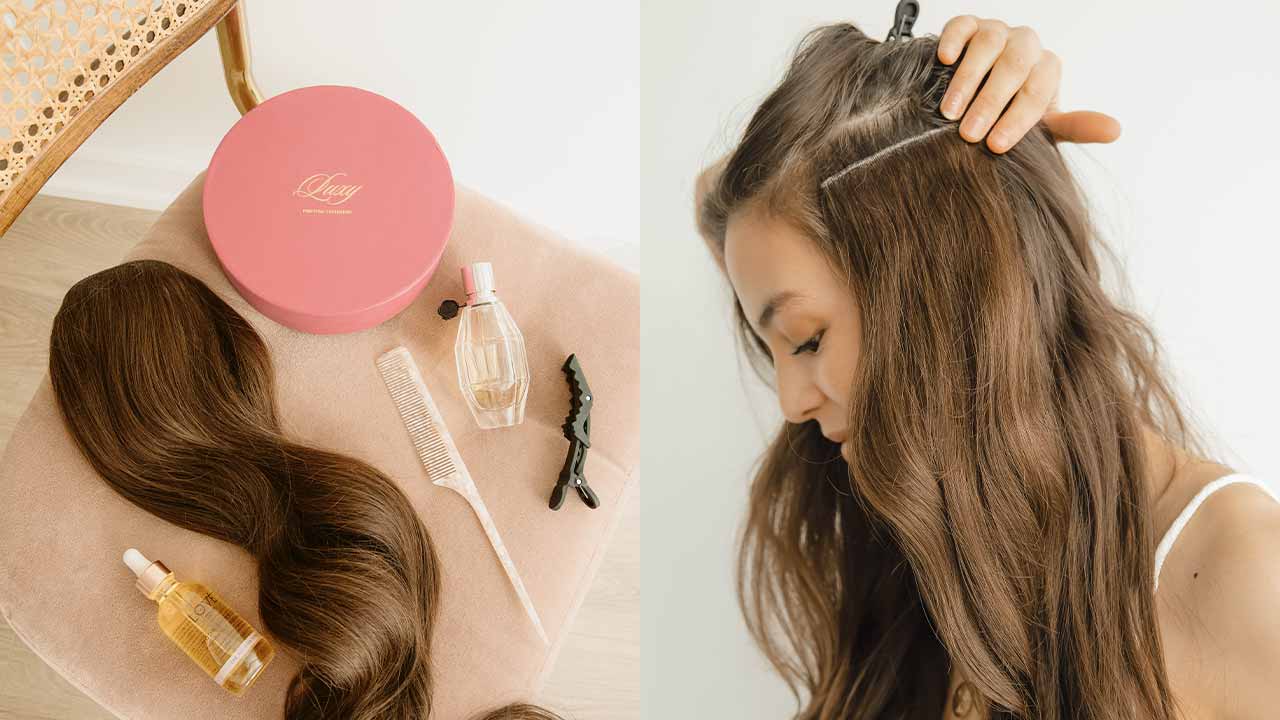
4. Can you shower with sewn-in extensions?
Yes, you can shower with the best sew in hair extensions. However, it is important to take proper care to prevent excessive moisture and product buildup. Avoid using heavy conditioners or oils near the attachment points and gently wash your hair, ensuring the extensions are adequately dried afterwards.
5. What is the best weave for a sew-in?
The best weave for a sew depends on your hair type and desired look. Common weave types for sew in extensions include Brazilian, Peruvian, and Malaysian hair. These weaves offer different textures and styles, so choose the one that best suits your preferences and hair type.
6. Does a sew in last longer than a wig?
Both sew-ins and wigs have their own lifespan. While a sew in can last several weeks to a few months, a wig typically lasts around 3 to 6 months with proper care. The durability of both options depends on various factors, including the quality of the hair, maintenance routine, and individual hair growth rate.
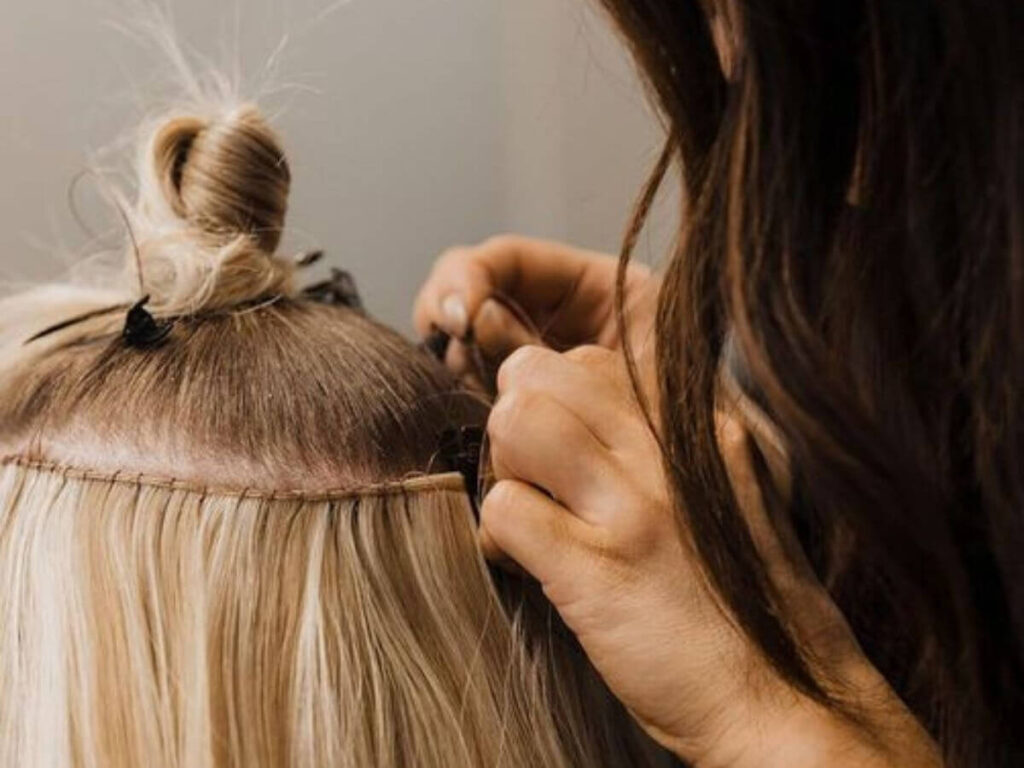
7. How do you maintain a sew-in?
To maintain a sew-in hair extension, follow these steps:
- Wash and condition the hair regularly with sulfate-free products.
- Use a wide-tooth comb or a brush specifically designed for extensions to detangle gently.
- Avoid excessive heat styling and use a heat protectant when styling.
- Wrap the hair at night with a satin scarf or bonnet to prevent tangling and friction.
Final thoughts
In conclusion, choosing the best sew in hair extensions can be a daunting task, but with the right information, it can be made easy. The five products discussed in this article are among the top on the market, and each has its unique features and benefits. Whether you’re looking for a natural look or a bold and daring style, there is a sew-in hair extension that will suit your needs.
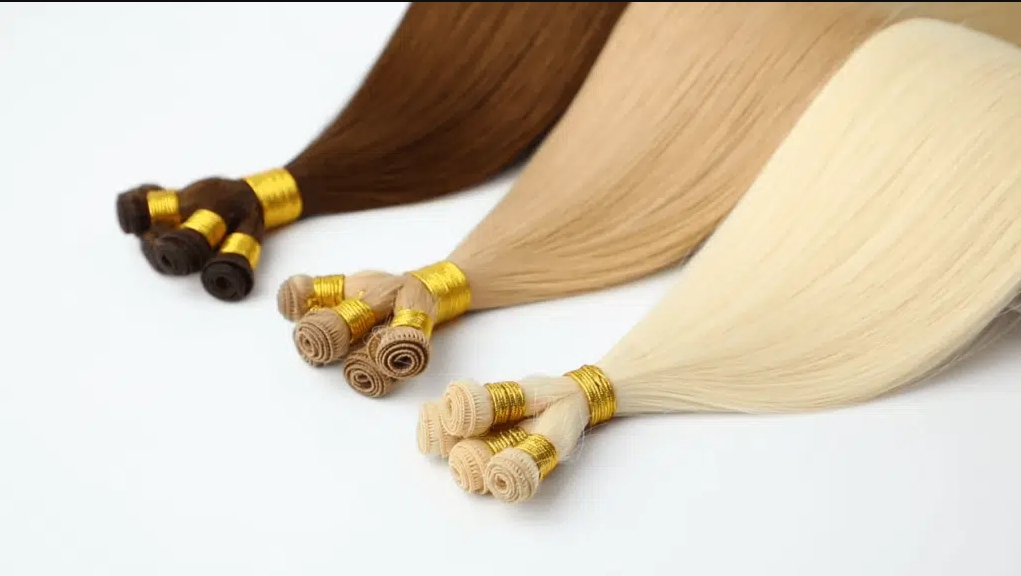
We hope that you found this article informative and helpful. Please continue to follow us for more informative and engaging content on all things hair-related!

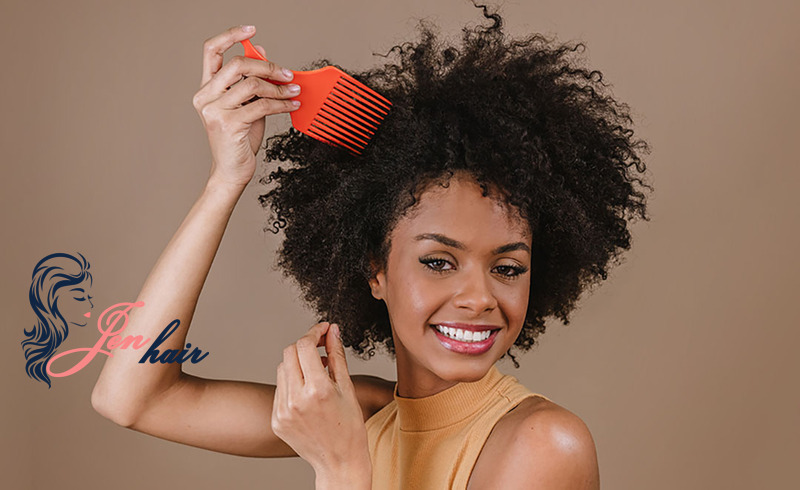 Guide Cornrows With Side Part The Best For Beginner
Guide Cornrows With Side Part The Best For Beginner Ultimate Guide: Headband with Hair Attached (Best Styles for 2025)
Ultimate Guide: Headband with Hair Attached (Best Styles for 2025)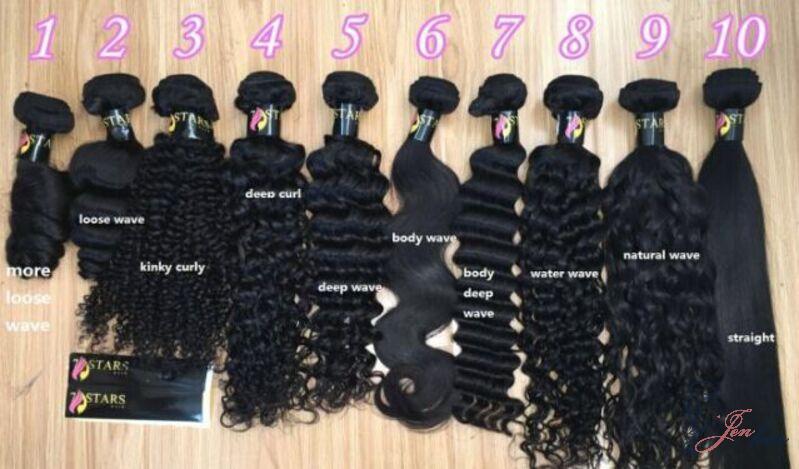 Top 7 Premium Human Hair Clip In Extensions For Black Hair
Top 7 Premium Human Hair Clip In Extensions For Black Hair
